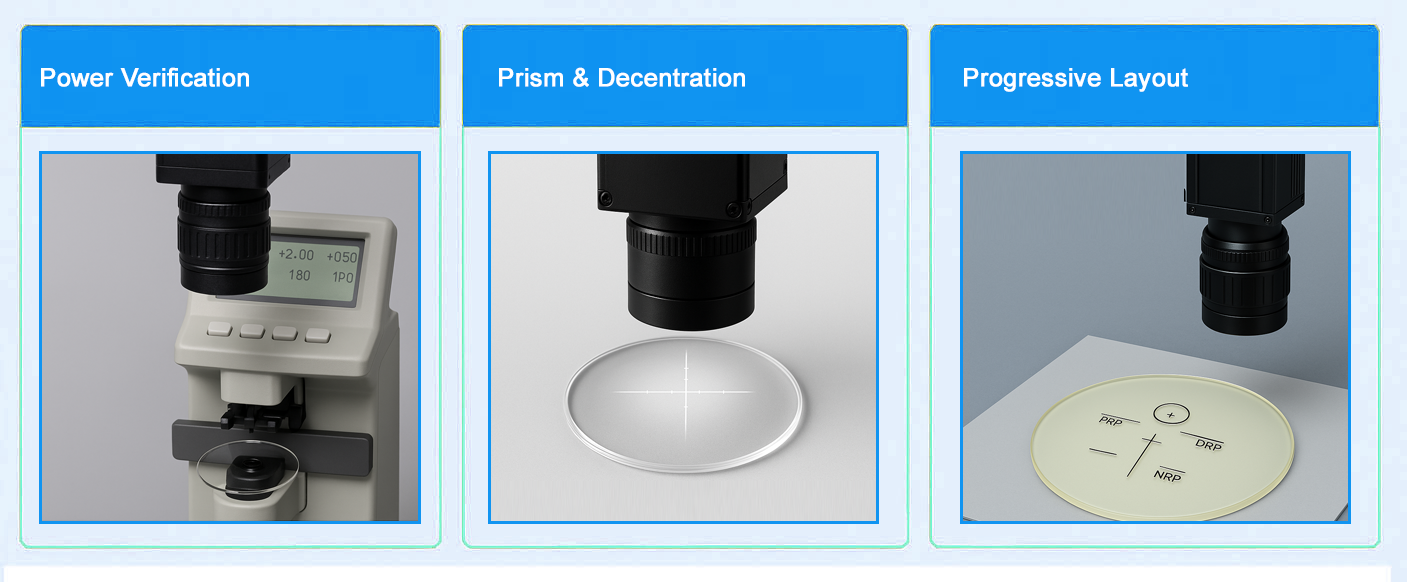System Architecture
Precision-engineered components working in harmony to deliver unmatched inspection accuracy
Imaging Hardware
- High-resolution area-scan cameras with HDR
- Telecentric lenses for metrology
- Liquid lens for rapid autofocus
- Application-specific lighting geometry
Live Vision AI
- Recipe-based inspection per material
- Multi-view fusion and reflection-aware segmentation
- OCR/OCV for engravings and ink
- Real-time PASS/FAIL with reason codes
Integration Layer
- PLC/SCADA, MES/LMS via OPC-UA, Modbus/TCP
- Connectors to automated lensometers
- Data exchange with edgers/blockers
- REST APIs for BI tools integration
Optical Metrology Options
Power Verification
Integrate with electronic lensometer to log sphere, cylinder, axis, prism and reconcile with job ticket
Prism & Decentration
Measure optical center vs. engravings/fitting cross; compute base/apex and magnitude
Progressive Layout
Check engraving positions, corridor length, PRP/DRP/NRP distances to tolerance




